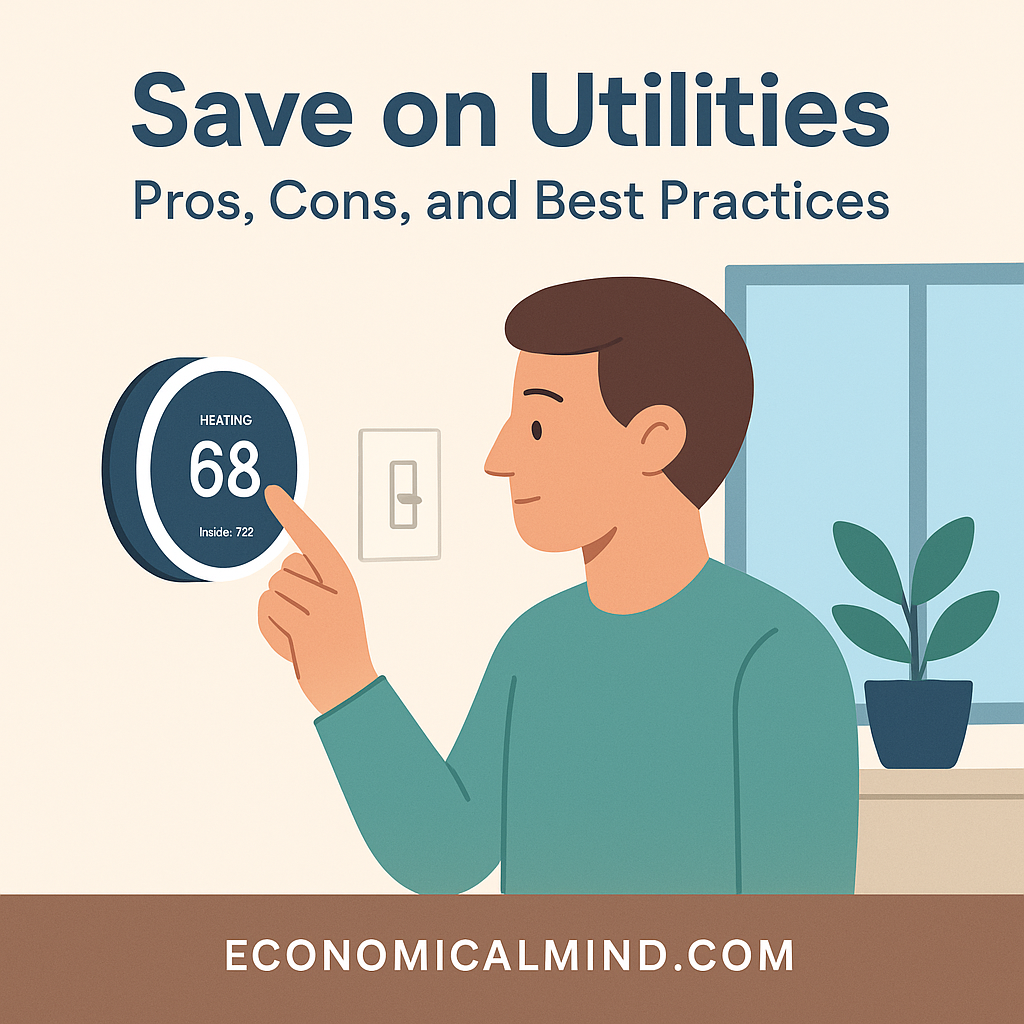
Saving on utilities is one of the most straightforward ways to reduce monthly expenses. Whether you’re trying to build savings, pay off debt, or simply stretch your income, small changes in how you use electricity, water, and gas can add up fast. But not every cost-cutting method makes sense for every household—especially when it comes to comfort, health, and long-term value.
The Pros of Saving on Utilities
Reducing your utility consumption isn’t just about lowering bills—it can bring broader lifestyle and environmental benefits.
- Immediate financial relief: Lower energy or water bills mean more room in your monthly budget for essentials or savings.
- Reduced environmental footprint: Energy-efficient habits cut carbon emissions and waste.
- Increased home efficiency: Many energy-saving upgrades (like insulation or smart thermostats) also improve comfort and property value.
- Long-term sustainability: The less you rely on energy-hungry systems, the more stable your expenses are against rate hikes or inflation.
The Cons (and Trade-offs) to Consider
While saving on utilities sounds like a no-brainer, overly aggressive strategies can sometimes backfire.
- Comfort loss: Turning the thermostat too low in winter or avoiding A/C in summer can lead to discomfort or even health risks.
- Upfront costs: Energy-efficient appliances, solar panels, or insulation upgrades can take years to pay off.
- Inconvenience: Unplugging devices, line-drying clothes, or hand-washing dishes may not fit every schedule.
- False savings: Cheap, low-quality products like bargain LED bulbs or water restrictors may fail early or reduce usability.
The goal isn’t to go to extremes—it’s to make smart, sustainable adjustments that work long term.
Best Practices to Save on Utilities
A mix of small daily habits and strategic home improvements can lead to meaningful savings.
1. Monitor and Measure Usage
- Use smart plugs or an energy-tracking app to identify high-consumption devices.
- Review your utility bill line-by-line to spot patterns and seasonal spikes.
2. Upgrade Where It Counts
- Install a programmable thermostat to automatically adjust temperatures when you’re away.
- Replace old appliances with Energy Star-rated models that use less power and water.
- Add insulation or weather-stripping to reduce heating and cooling loss.
3. Adjust Everyday Habits
- Wash clothes in cold water and air-dry when possible.
- Turn off lights when leaving a room and unplug idle electronics.
- Run full loads in your dishwasher or washing machine to maximize efficiency.
4. Leverage Rebates and Incentives
Many utility companies and local governments offer rebates for efficient appliances, solar installations, or weatherization upgrades. Taking advantage of these can drastically shorten your return on investment.
5. Think Long-Term, Not Just Monthly
Some savings, like switching to solar or upgrading HVAC systems, are investments that pay off over years. Balancing short-term habits with long-term upgrades gives the best results.
Balancing Comfort and Cost
The smartest households treat utility savings like a lifestyle optimization, not a deprivation challenge. Adjust gradually, track your results, and invest in upgrades that genuinely improve quality of life. Over time, a balanced approach can save hundreds—or even thousands—each year while making your home more efficient and comfortable.
